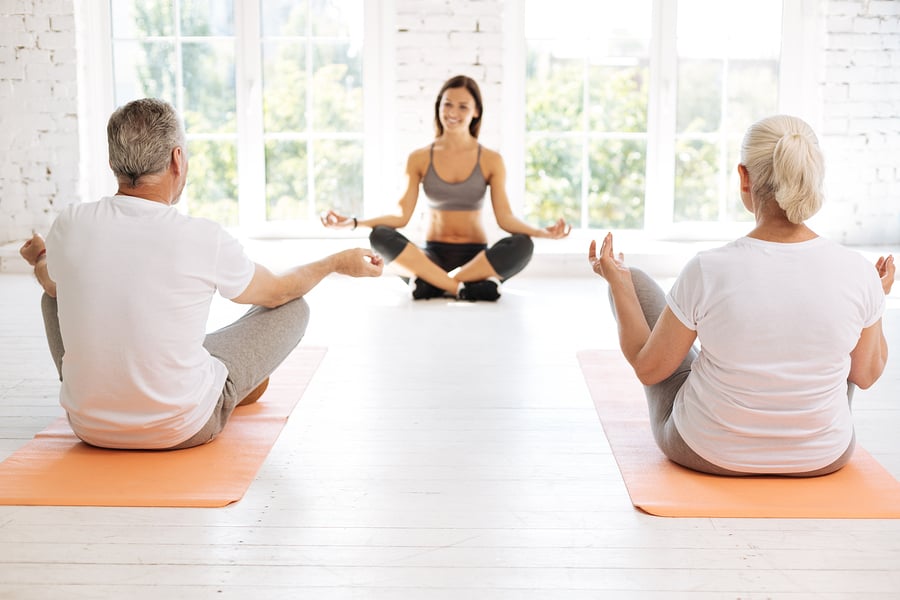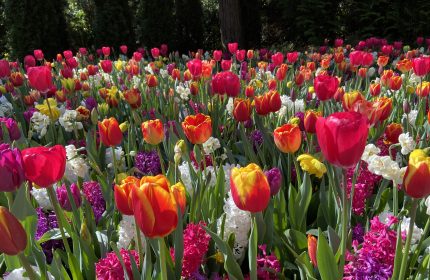Yoga at 50+ – a beginner’s guide
Originating in India over 5000 years ago, yoga is an ancient exercise designed to improve physical and mental wellbeing.
Once you start to follow the practice you will notice benefits to your strength, flexibility and breathing.
You can start yoga at any age as there are various types to suit different abilities. Yoga provides a connection between mind and body. The health benefits of beginning yoga when you are older are many, from improving joint flexibility and reducing your joint pain to building muscle and lowering your blood pressure.
We have put together a basic guide to starting yoga at 50+ to ensure that as a beginner, you get the most from this excellent practice.
What is Yoga?

It is impossible to ignore yoga, it is everywhere. There are between 20,000 and 30,000 yoga classes taught in the UK each week; shops dedicated to selling yoga supplies, and clothing and books all about it. But do you know what yoga is and how it could benefit you?
As we touched upon, yoga is an ancient exercise. Yoga means ‘union’ in Sanskrit and is a group of physical, mental and spiritual practices that first originated in India. Traditional forms of yoga include breathing techniques; asanas or postures; meditation and chants. Together they can help reduce your stress and improve your immunity.
In the West, yoga is less about meditating and chanting and has become more about yoga as exercise with a focus on breathing techniques; postures; stress reduction and relaxation. This is known as modern Hatha Yoga.
How to practice Yoga?
Yoga is practiced in bare feet and fitted comfortable clothing on a non-slip yoga mat. The clothes you wear need to be stretchy to allow you freedom of movement. When you go along to a yoga class most studios will provide additional equipment such as blocks, blankets and bolsters.
You can of course practice yoga at home which is why it is so popular. Find a quiet spot in your house with enough space for you to move on your yoga mat. You can replace blocks with books and use cushions and blankets instead of bolsters.
 Which Yoga to choose?
Which Yoga to choose?
Which type of yoga is best for older adults? As there are many different types there is a yoga practice for everyone but remember to consult your GP before you start.
Here we look at four types of yoga you may wish to try as an older adult. These will help you master the basic poses and are not as demanding as Ashtanga and Bikram Yoga:
Restorative Yoga
This is a good choice if you are looking for something relaxing as it is a slow and meditative form of yoga.
Hatha Yoga
As we touched upon, Hatha Yoga focuses on physical postures, both sitting and standing. Breathing and stretching play a large part.
Iyengar Yoga
This is all about the correct form. Classes use blocks and other equipment to help you guide your body into the right alignment.
Kundalini Yoga
Kundalini is very much about the spiritual side of yoga. Here you combine your yoga practice with meditation, chanting and breathing techniques.
Chair Yoga
This is a good choice for those who need the additional support of a chair due to limited mobility and balance. It is also of benefit to those of you who suffer from health conditions such as osteoporosis or chronic pain.
Basic Yoga Postures – a guide
When you start yoga, the different postures and breathing techniques can seem a bit of a mind field. It is important to not stress about this (thereby defeating the whole aim!). Once you master the basic postures you will feel ready to tackle harder ones.
How to begin Yoga and how often
 Start with a gentle and straightforward class and then build up from there. You will get used to beginner postures at this time as well as understand the basic breathing methods.
Start with a gentle and straightforward class and then build up from there. You will get used to beginner postures at this time as well as understand the basic breathing methods.
As with anything, the more time you do yoga the better your technique will become. When starting as a beginner two to three sessions of 30 minutes each a week is ideal. This will allow you to improve your strength, flexibility and understanding and won’t overstretch your muscles.
Overtime you will have the confidence to practice at home on your own rather than in a group setting. Going forward practising for short periods daily is beneficial, even 15 minutes a day. It does all depend on your own goals for your mind and body.
If you are consistent with your yoga practice you will reap the benefits of greater energy, better sleep and improved flexibility and strength. The key is to find what works for you in terms of the type of yoga you choose and how often you wish to do it.




















